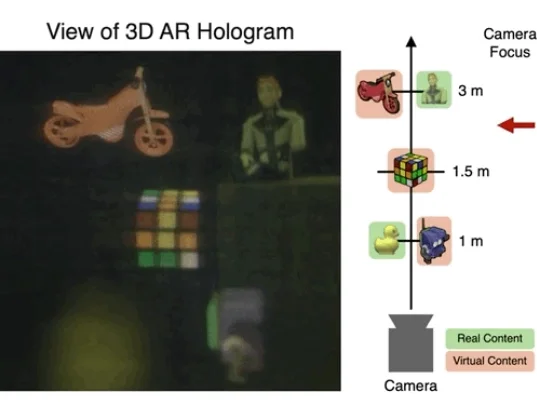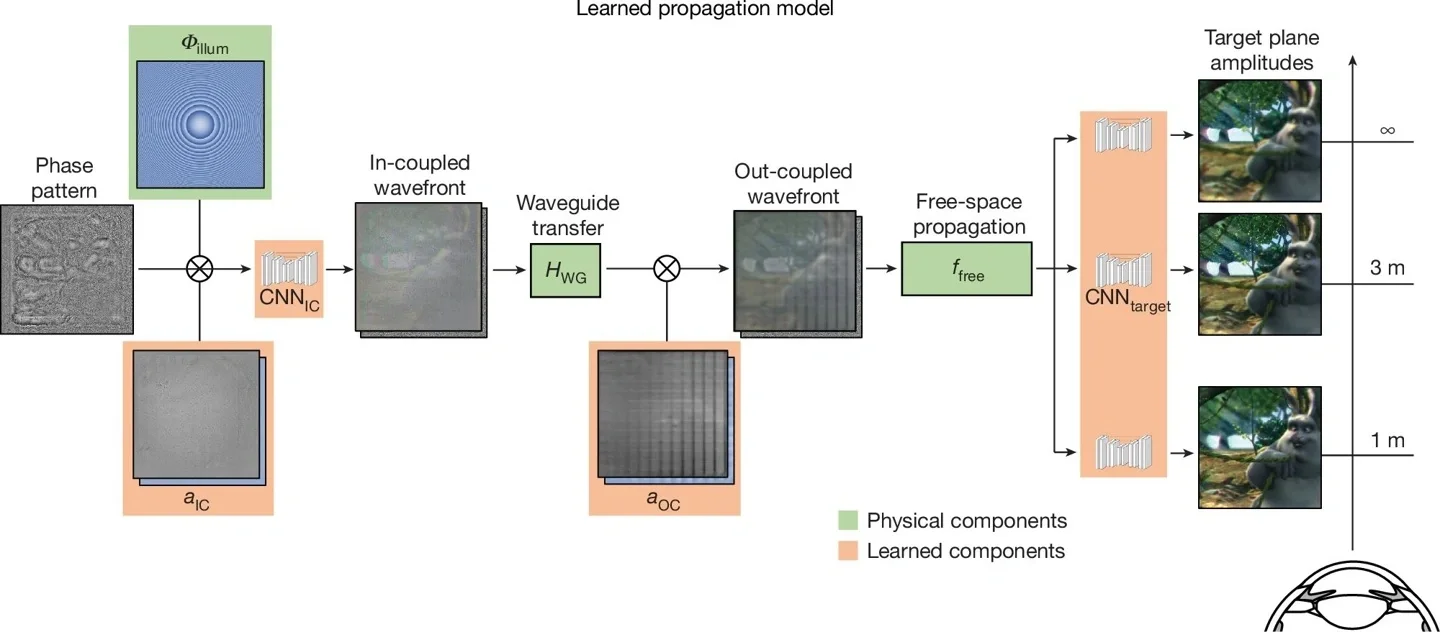5 月 10 日消息,来自斯坦福大学的科研团队近日研发出全新 AI 辅助全息成像技术,比现有方案更薄、更轻、质量更高,有望让增强现实(AR)眼镜翻开新篇章。

目前该产品原型的视野很窄,在实验室环境下只有 11.7 度,远小于 Magic Leap 2 甚至 Microsoft HoloLens。
不过该原型已展现出无限潜力,可以在标准眼镜框架中实现全息组件堆栈,通过 AI 训练投屏出逼真全彩、具备不同深度的移动 3D 图像。


这款原型和其它 AR 眼镜一样,使用波导(waveguides)引导光线穿过眼镜进入佩戴者眼睛。不过团队开发出独特的“纳米光子超表面波导”,不再需要笨重的准直光学器件,并通过 AI 算法训练“学习物理波导模型”来提高图像质量。

来源:IT之家

资料下载:
欢迎您点击此处加入AR/VR通讯录,目前已经有3000多人加入,如歌尔、HTC、OPPO、创维、PICO、字节跳动、黑鲨、联想、耐德佳、灵犀微光、立讯、领益智造、欧菲光、华勤、闻泰、立讯、珑璟光电、舜宇、深圳虚拟现实等,点击下方关键词可以筛选

